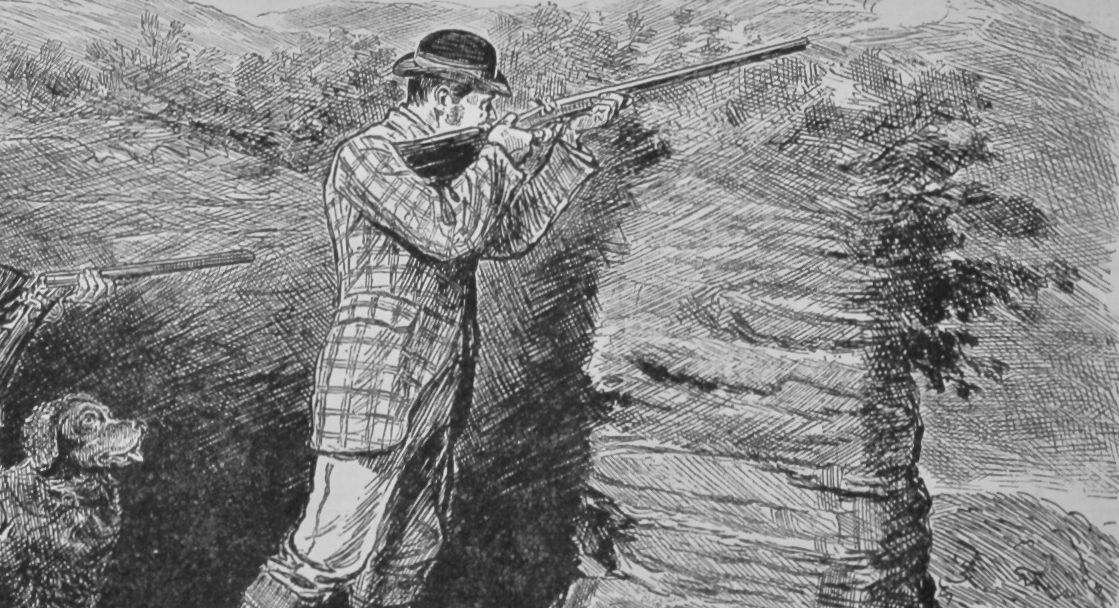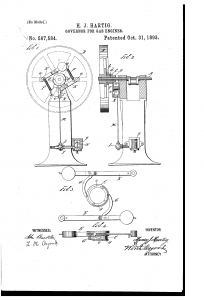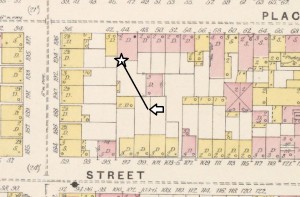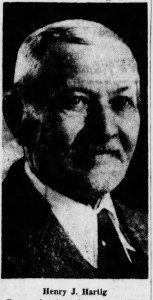THE STRAY PATH OF A BROOKLYN BULLET (1894)

Brownstone Detectives investigates the history of our clients’ homes.
The story you are about to read was composed from research conducted in the course of one of those investigations.
Do you know the history of YOUR house?
********************************************************************************************************************************

Henry J. Hartig was no law-breaker.
As a machinist, he had invented one of the first successful gas engines and patented numerous governor designs over his lifetime.
An industrious German-born American citizen, well-known and loved throughout his Fort Greene neighborhood, Hartig was a law-abiding family man who would go on to sire five children with his wife, Emma.
He started the Hartig Standard Gas Engine Company, manufacturing his engines – which used illuminating gas for fuel – from the early 1890s and well into the 20th century.

And so, possessing the intense interest in creating, tinkering and experimenting that drives all serious inventors, his hunger for learning drew him into a variety of fields that sparked his interest.
One of them was guns.
Hartig owned at least one firearm – a Flobert Remington “Cadet” .22 rifle – with which he enjoyed taking target practice in his backyard.
But when a stray bullet from that weapon struck an innocent man one lazy summer afternoon, it looked as though Hartig would lose it all.
“CULLOM WAS HALF ASLEEP WHEN HE FELT A SHARP TWINGE…”
Of course it was an accident, and many Brooklynites were owners of firearms in the 1890s – it was that kind of place back then. But then again, the law was the law and the Brooklyn Police could not ignore a shooting.

The location was approximately where Fort Greene and the Wallabout meet, and Hartig, 39, along with one of his boarders, Henry F. Mulenhausen, 22, were fiddling around with a rifle in Hartig’s backyard.
The address was No. 99 Prince Street – which is the site of today’s R.V. Ingersoll housing project – and the men, “practicing with a Flobert rifle,” shot a few rounds toward the rear of the yard.
It was at that time that “one of the small 22 caliber bullets passed through the fence.”
Alfred Cullom, who lived at No. 44 Fleet Place (their backyards abutted one another) had meanwhile been “reclining on his doorstep” in the backyard and was “half asleep when the felt a sharp twinge in his shoulder.”

Cullom arose and, “upon examination found the bullet wound,” discovering it “just over the armpit.”
Officer Ansbro of the Adams Street police station was called in and he arrested Hartig and Mulenhausen. Both men readily admitted that “they had fired the rifle.”
The news story does not mention how the two men discovered that they had shot someone or if they were with Cullom aiding him at the time of the arrest.
Fortunately, although the doctors at Brooklyn hospital had “yet been unable to locate the bullet,” Justice Walsh, who would review the case, learned that “Cullom’s life was in no danger.”
Learning this, Walsh “released the prisons on trial pending hearing.” And so, with a sign of relief, the two men went home.
It is not recorded what happened to the Flobert rifle.
POSTSCRIPT

Henry J. Hartig went on to continue successfully producing his gas engines through the First World War, retiring in 1919. He continued, though operating a Ford cylinder block exchange afterwards.
Known affectionately as “Pop,” he moved his family to Flatbush around 1913, where he lived the remainder of his life, passing from a stroke in 1939.
Only one of his children preceded him in death, his daughter, Viola, who was on the S. S. Morro Castle, when, on a trip from Havana, Cuba, to New York in 1930, it caught fire and burned killing 137 people.
Henry retired for good after his daughter’s death, spending nine years in his “principal hobby,” painting.
“He was working on a painting at the time of his death,” noted the Brooklyn Daily Eagle.
———————————————————————————————————————–
 Brownstone Detectives is an historic property research agency. Our mission is to document and save the histories of our clients’ homes. From our research, we produce our celebrated House History Books and House History Reports. Contact us today to begin discovering the history of your home.
Brownstone Detectives is an historic property research agency. Our mission is to document and save the histories of our clients’ homes. From our research, we produce our celebrated House History Books and House History Reports. Contact us today to begin discovering the history of your home.